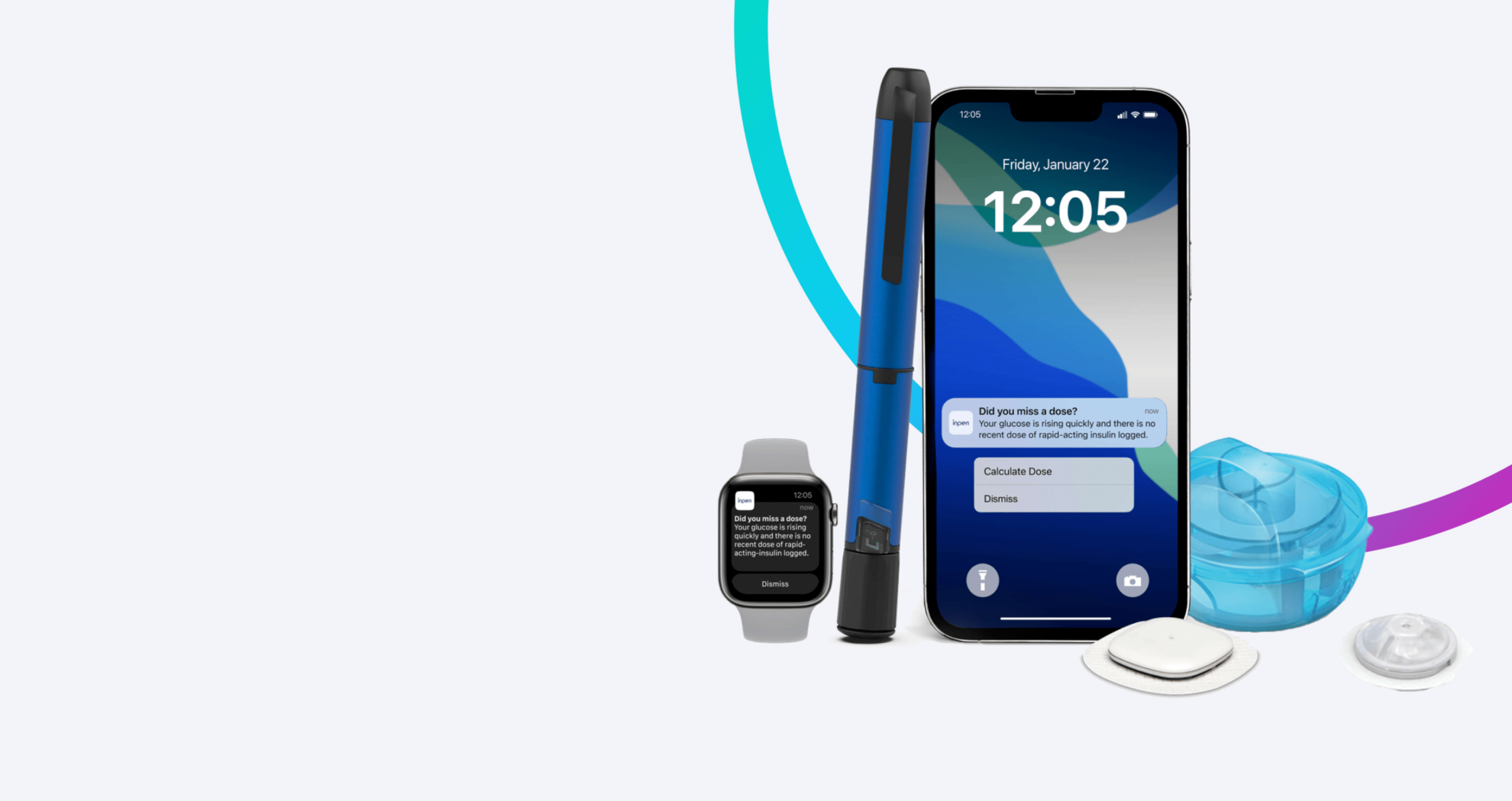
Fewer needles pokes.
Less anxiety2
i-Port Advance™ is a small injection port that lets you take your injectable medications without having to puncture your skin for each injection.

Reduce the number of punctures from up to 15 to 1 over three
3 days with only 1 puncture? Yes, it’s possible!
The port can be worn for up to three

Did you know ?
A pediatric Diabetes study showed that children using the i-Port Advance™ injection port significantly improved their self-reported quality of life and parents reported less

Now we are less scared of injecting ourselves
Application is quick and virtually pain free with the built-in serter. Only change the i-Port Advance™ injection port every three days.

Smart MDI system with Simplera™ CGM Take the guesswork out of insulin dosing.
Combine i-Port Advance™ with Smart MDI system
Frequently asked questions
Those newly diagnosed with type 1 diabetes who might be afraid of injections. Anyone who experiences the emotional challenges of injections like fear, anxiety and stress or their physical impact like bruising, scaring or pain may benefit from i-Port Advance™. It’s especially beneficial to children and their loved ones, who often get anxiety when it’s time to take an injection. It can also help in administering additional doses (for example correction boluses and injections to cover snacks between meals). Children or teenagers may also benefit from i-Port Advance™ as an aid to help them become more independent when administering insulin therapy. If you have type 2 diabetes and are new to taking insulin, this is a great way to improve the transition to taking injections.
You can use the port with pens or syringes. Needles need to be 5-8mm (3/16-5/16”) in length and 32-28 gauge.
You can use both, but there is a rule: Always inject rapid acting insulin first, wait one hour, then inject your long acting insulin.
You can watch the Training Video below and download the User Guide
- Hanas R, Adolfsson P, Elfvin-Akesson K et al. Indwelling catheters used from the onset of diabetes decrease injection pain and pre-injection anxiety. J Pediatr. 2002;140(3)315-320
- Riley D, Raup G. Impact of a subcutaneous injection device on improving patient care. Nurs Manage. 2010;41(6):49-54
- Troncone A, Cascella C, Zanfardino A, Chianese A, Confetto S, Giglio M, et al. Psychological outcomes of injection port therapy in children and adolescents with type 1 diabetes and their primary caregivers. Acta Diabetol. 2017 Oct 1;54(10):975–8
* Compared to injections with standard needles. The port can be worn up to 3 days.
** Considering 5 injections per day.
*** Do not inject more than 75 times through a single device.
- 1.Hanas R, Adolfsson P, Elfvin-Akesson K et al. Indwelling catheters used from the onset of diabetes decrease injection pain and pre-injection anxiety. J Pediatr. 2002;140(3)315-320
- 2.Riley D, Raup G. Impact of a subcutaneous injection device on improving patient care. Nurs Manage. 2010;41(6):49-54
- 2.Riley D, Raup G. Impact of a subcutaneous injection device on improving patient care. Nurs Manage. 2010;41(6):49-54
- 3.Troncone A, Cascella C, Zanfardino A, Chianese A, Confetto S, Giglio M, et al. Psychological outcomes of injection port therapy in children and adolescents with type 1 diabetes and their primary caregivers. Acta Diabetol. 2017 Oct 1;54(10):975–8
- * Compared to injections with standard needles. The port can be worn up to 3 days.
- ** Considering 5 injections per day.
- *** Do not inject more than 75 times through a single device.
- The content and all information provided on this website is for your informational use only and is not intended to be a substitute for professional medical advice, diagnosis or treatment in any manner. The patient stories/quotes provided are experiences specific to a particular patient. Responses to a treatment may vary from patient to patient. Always consult your physician if you have any questions or concerns about your health.
